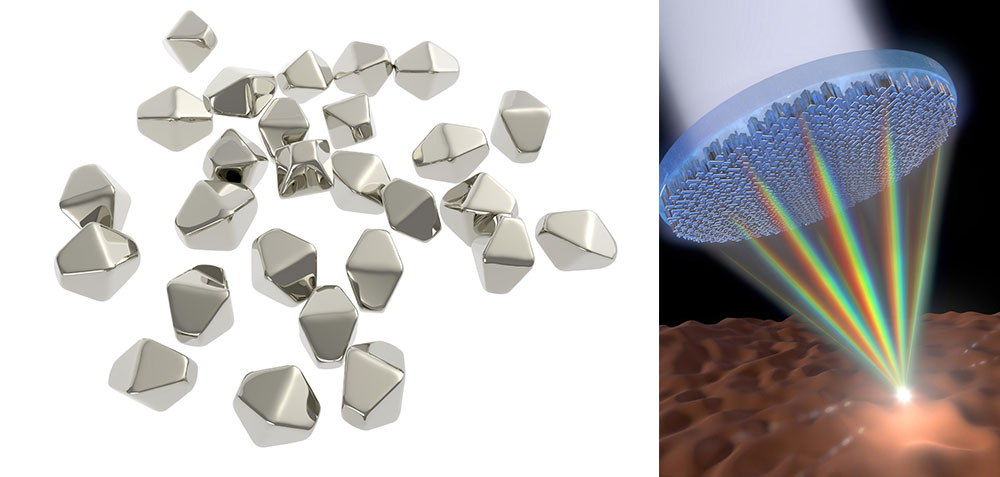
Nanomaterials use chlorine chemistry to improve solar power plants, camera and virtual reality optics
In two recent developments, titanium dioxide is driving advances in solar power generation and cameras and optical devices for virtual and augmented reality. Chlorine facilitates the production of titanium dioxide by transforming and purifying the materials. Chlorine is largely recycled within the production process and does not appear in the final product.1
Heat transfer in solar power plants could be made dramatically more efficient using nanofluids made with titanium dioxide (TiO2), reports Phys.org. Solar power plants use renewable energy from sunlight, producing no waste or emissions. They concentrate solar energy in reservoirs filled with a material that transfers the heat to a container of water. The water boils and moves turbines, which generate electrical energy. A recent paper in the Renewable Energy journal describes a way to improve the efficiency of this heat transfer by adding tiny particles of titanium dioxide. Known as nanoparticles, these speed up the boiling process and increase the amount of electricity generated from solar plants. Thanks to the titanium dioxide nanoparticles, the ability of the heat-transfer material to conduct heat rose by almost 53%, and the efficiency of the nanofluids improved by up to 35%. The paper’s lead author, Andrey Yasinskiy, works at the Siberian Federal University and the University of Cádiz, Spain.
In the second innovation, titanium dioxide has been used to make a distortion-free lens with a simple, flat surface, which may revolutionize optical devices (Nature Nanotechnology). Using tiny, fin-shaped particles of titanium dioxide known as nanofins, this can focus the full spectrum of visible light at high resolution on one spot, which previously required a stack of bulky, curved conventional lenses. These were required because light of various colors travels at different speeds through lenses. The new ‘metalens’ – which is reportedly thin, easy to manufacture and cost effective – opens new possibilities both in traditional cameras and in virtual and augmented reality (Photonics.com). This was developed by researchers at the Harvard John A. Paulson School of Engineering and Applied Sciences (press release).
